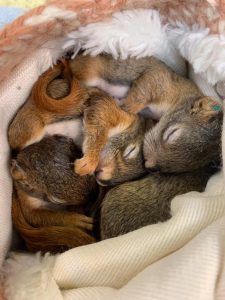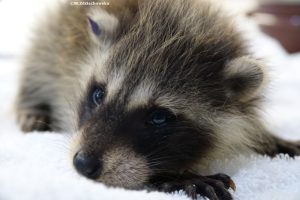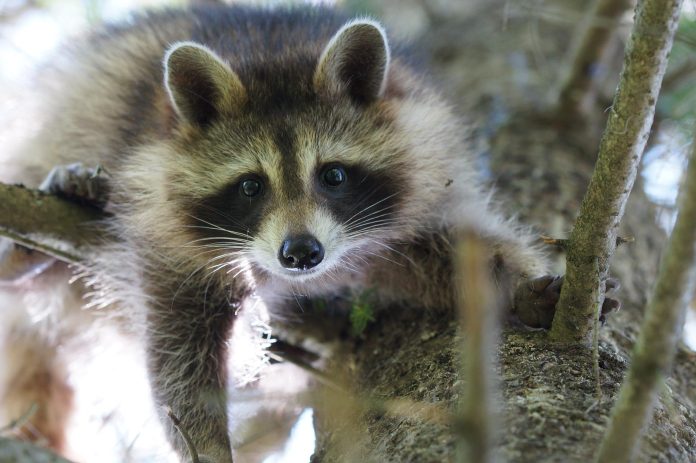As the summer comes to a close, and temperatures begin to drop, it’s no surprise that wildlife is on the lookout for a comfortable location to spend the cold winter months. Deer mice leave their mark in the early days, and we brace ourselves for the possibility that other wild animals, larger perhaps, might make their way into our homes or cottages.
The good news is that you can greatly reduce the likelihood of wild animals taking shelter in your home or cottage, and we would like to offer a handful of suggestions to get you started on your journey towards “wildlife proofing” your property.
Step 1. Remove Access to Food Sources
- Ensure that all trash bags are tied tightly and stored in a secure trash bin. Also, don’t forget to clean your bins on a regular basis to prevent animals from being attracted to the smell of household waste.
- Keep your kitchen and all areas of your home free of crumbs and spills.
- Feed pets inside, and store pet food in critter-proof containers.
- Keep your yard free of fallen fruit, pinecones and acorns, which wild animals may view as food sources.
- If you choose to have a bird feeder in the winter months, place it far from your home, and be certain to clean up spills periodically.
- And don’t forget to protect your outdoor living area – clean and cover grills, and bring outdoor cushions inside so that neither become a cozy nest.

Step 2. Seal Entry Points – Big and Small
- Install chimney and vent covers.
- Seal entrances to the spaces under your porch, deck stairs or shed with wire mesh that is anchored into the ground.
- Check your roof for holes, and regularly clean the soffit and drainage system, including eavestroughs.
- Inspect windows and doors for cracks and holes that could offer entrances for animals.
- Install window-well grates to protect your basement windows.
- Check for, and repair, cracks and holes in the siding and foundation of your home. Not only is this a concern for basement flooding, but it’s an entryway for mice.
- Also, keep all plants around your house trimmed. Animals looking for shelter may use branches, shrubs and vines to access vulnerable parts of your home.
Understandably, finding every nook and cranny can be a challenge. Mice and squirrels have been known to squeeze through the most absurdly-small cracks. And yet, there is no denying that your home will be far less appealing if you eliminate the snacks and close the gates.
Importantly, the best time to be sealing entry points is late fall. While the majority of babies leave their nests by the end of August, it is not uncommon for squirrels to be born in September. That said, if you are preparing to seal a hole, please check first to ensure that there are no animals inside. If you’re uncertain, simply crumple up a paper towel and put it in the entrance. If it gets pushed out, you likely have a visitor and can call someone for help.
Aspen Valley Wildlife Sanctuary is happy to provide guidance on how to encourage wild animals to leave your home, by making it less hospitable for them. That said, patience is a prerequisite. If you are unwilling to host a family of squirrels or raccoons for even a short period of time, we ask that you utilize a humane option.

While many organizations will claim to “humanely” trap and remove animals from your home, this does not guarantee the humane treatment of these animals after they are removed from your property. The best businesses are the ones that treat all animals with the utmost respect – regardless of the species or the company’s bottom line. Not only will such companies remove animals humanely, they are also experienced in reuniting moms with their babies by enabling the mothers to take young to secondary dens. A reputable company will also assist you in keeping all critters out by repairing entry holes and wildlife proofing other potential entry points.
A word to the wise. Never use rodenticides! The intended victim suffers a slow and painful death, and there is also a good chance that in this weakened state it will be eaten by a predator, such as a fox or an owl, who will suffer the same fate. It is common, as well, for these lethal mixtures to be mistaken as tasty treats by birds and other mammals (including your pets), who you had no intention of harming. We also ask that you never use glue traps. These are barbaric, to say the least.
Submitted by Aspen Valley Wildlife Sanctuary. Visit aspenvalley.ca to learn more and discover the many ways to help wildlife in Muskoka.








